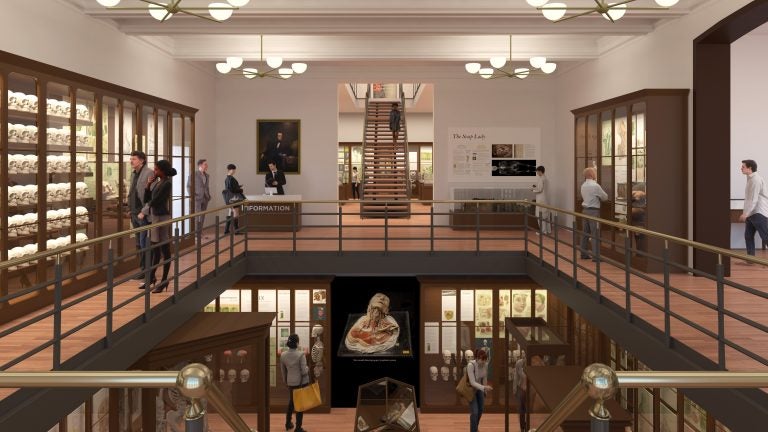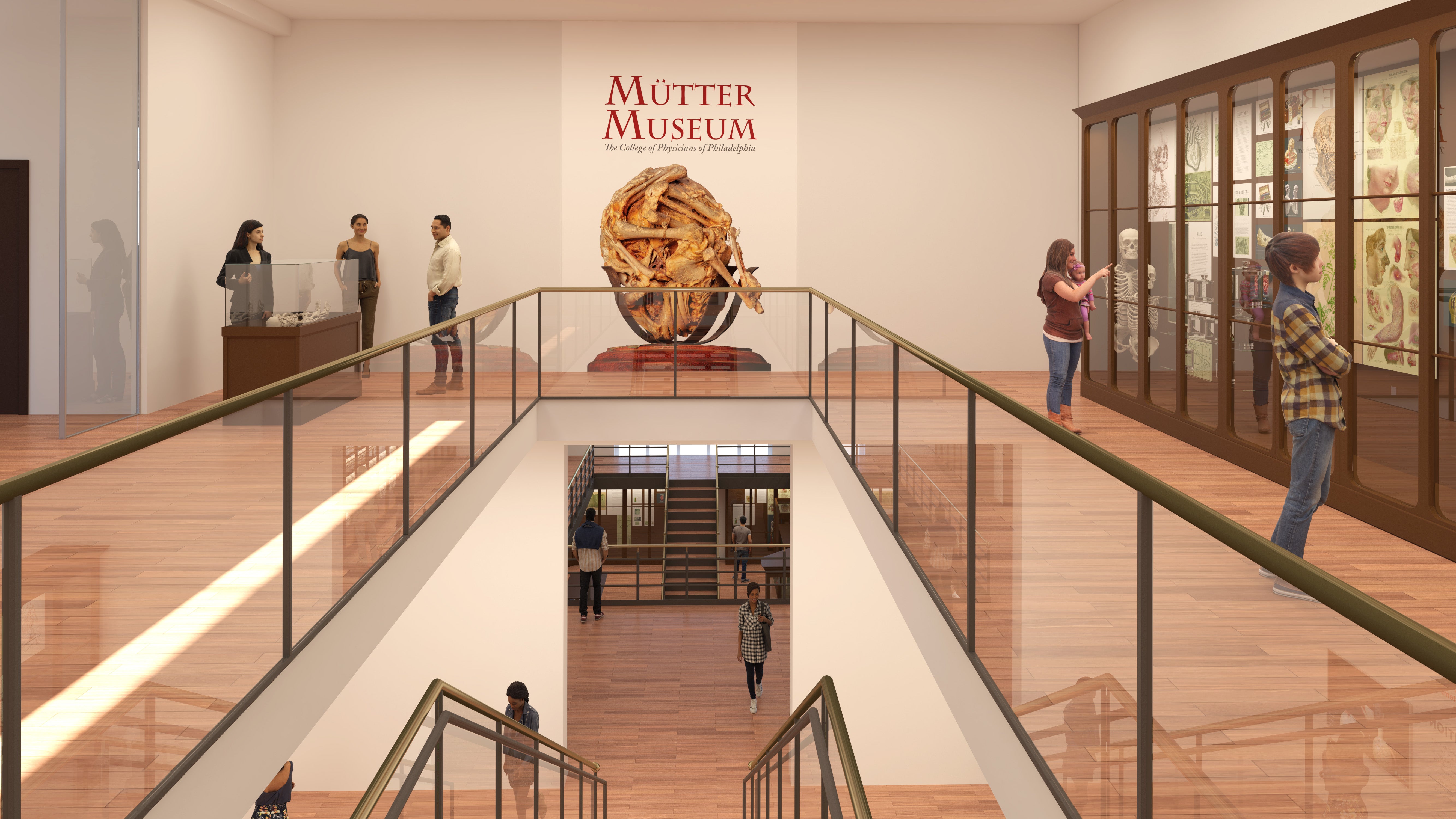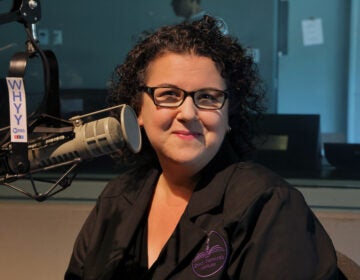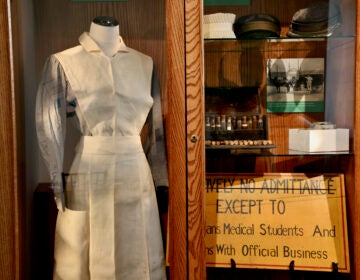Mütter Museum to double medical abnormalities exhibits
The College of Physicians in Philadelphia plans to shrink its library in order to expand its museum of medical abnormalities.

The Mütter Museum is getting a remodel. (Renderings courtesy of KieranTimberlake)
Like the human horn composed of compacted keratin, or President Grover Cleveland’s jaw tumor, the Mütter Museum is in growth mode.
The museum of medical oddities and bizarre anatomy — including diseased bones and anomalies floating in jars — has been a macabre part of Philadelphia’s cultural scene for more than 150 years. It now plans to double in size.
The Mütter is the exhibition arm of the College of Physicians of Philadelphia, which is a nonprofit dedicated to the history and advancement of medicine. Established in 1787, it is America’s oldest medical organization.
It’s historic building on 22nd Street in Center City also has an important library of rare medical texts, some dating back more than 500 years to the birth of the printing press, and even earlier. The College has ancient clay tablets related to medicine, thousands of years old.
But the Mütter Museum is the most popular part, with its glass cases containing diseased bones and things floating in jars. There are pieces of Albert Einstein’s brain, the skeleton of a boy whose muscle tissue ossified into bone, and a collection of more than 2,300 objects that had been swallowed.

“We get very crowded,” said president and CEO Georg Wohlreich. “Particularly on a weekend, it’s uncomfortably crowded. We believe we need to share our treasures with more of the public.”
The new plan is to use more of the building for the museum, and less for the library. For a year now, a committee of scholars has been culling the library of redundant manuscripts and those available digitally, retaining only the rarest and most valuable books.
After removing some works Wohlreich estimates there will be thousands of linear feet of shelving that can be eliminated, enough space to double the size of the museum.
About 90% of the museum’s collection is not on view, including an old iron lung — a cylinder in which a patient would lie to help with breathing. It was used in the early 20th century to treat polio before there was a vaccine.
“Most people — thank god — don’t know what an iron lung is. When I grew up many people I knew were in iron lungs,” Wohlreich said. “If we can show people what an iron lung is, they can appreciate the miracle of the Salk and Sabin vaccines.”
The College of Physicians is well on its way to raising $25 million for the project; more than $17 million is already raised. The lion’s share will be used for design and construction costs. Some of it will be used to expand staffing and educational programs.
“This is not just about real estate,” Wohlreich said. “It’s about endowing chairs, endowing programs. It’s about making our educational programs more robust and permanent.”
WHYY is your source for fact-based, in-depth journalism and information. As a nonprofit organization, we rely on financial support from readers like you. Please give today.





